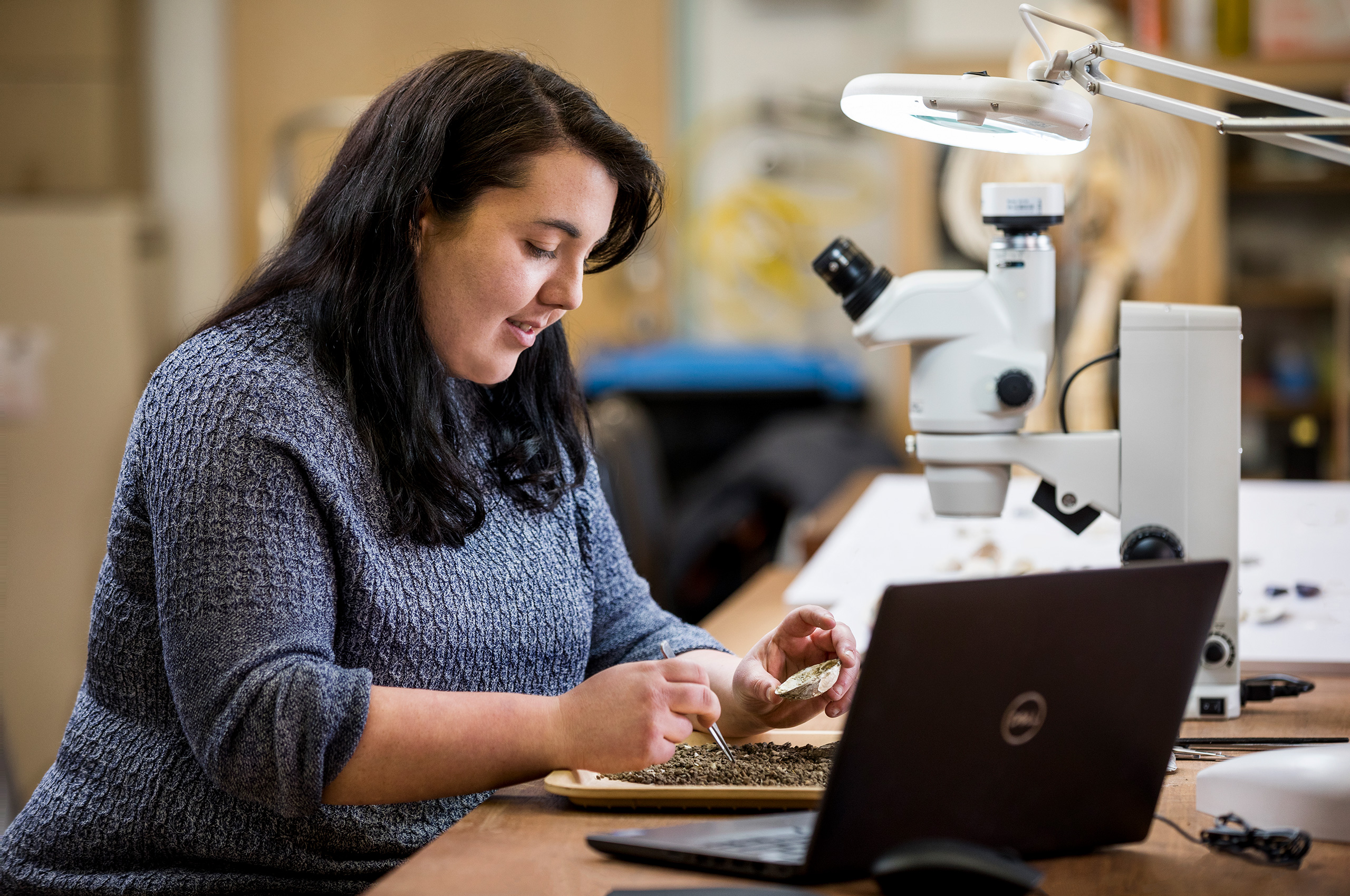Department of Archaeology and History facilities

Our facilities provide Archaeology students with opportunities to engage in research from their first year of study.
Our purpose-built teaching and research facilities, and access to real digs in Australia and overseas, give students essential hands-on experience that sets them up for future career success.
We have specialised teaching facilities for archaeomagnetism, past environments, stone tools analysis, microscope analysis and faunal bone analysis. We offer object-based teaching with large comparative hominin fossil, osteoarchaeological, zooarchaeological, geological and stone tool collections. And, we have facilities for 3D scanning and printing, and virtual reality applications.
Our outside teaching facilities feature multiple simulation excavation areas with archaeological assemblages, based on Indigenous Australian archaeology through to historic Australia. These areas prepare students for the most common types of archaeology encountered in Australia and give them the skills needed to work on sites of any archaeological period and locale.
Our facilities include:
This is a purpose-built archaeological geophysics and archaeomagnetic research and teaching laboratory and is designed for work on archaeological and fossil bearing sites. This includes both palaeomagnetic and environmental magnetic methods.
The laboratory focuses on human origins research (geochronology, ancient environments and pyrotechnology) and the development of the South East Australian Archaeomagnetic Reference Curve. The laboratory also works on medieval, chrarcolithic, bronze age and historical period sites with global reach on sites in Australia, China, Kenya, Oman, Saudi Arabia and South Africa.
It also has field-based equipment including pXRD, pXRF, ground penetrating radar, gradiometry and magnetic susceptibility for conducting archaeological geophysics and chemical characterisation.
This facility features a rock preparation and microscope laboratory used for the preparation for rock samples, and micromorphological and petrographic analysis.
This laboratory is equipped to extract pollen from archaeological sediments, for analysis under high-powered microscopes. Palynology, or pollen analysis, allows us to reconstruct how vegetation changed through time, which can be used as an indicator of climate (primarily temperature and precipitation).
By reconstructing the environment at archaeological sites, we can learn more about what the climate was like, and what was available to past populations. In some cases, it is possible to detect how human activity changed the local environment and, therefore, allow archaeologists to assess human-environmental interaction in the past.
Since 2009, we have taught Archaeology students excavation and recording skills at artificial sites located on La Trobe’s Bundoora campus.
The project – known as Teaching Archaeological Research Discipline in Simulation (TARDIS) – uses multiple artificial archaeological sites with a range of replica site types from different times and places in the past. This ranges from international comparatives (for example, a Neolithic village in China or a Pleistocene landscape in east Africa) to typical Australian site types such as a Victorian farmstead, or Aboriginal lithic scatters and hearths.
Students excavate, record and interpret these sites in a controlled, safe and accessible environment, gaining the core skills they need to excavate real sites on a field school, during an internship, or even in their first job.